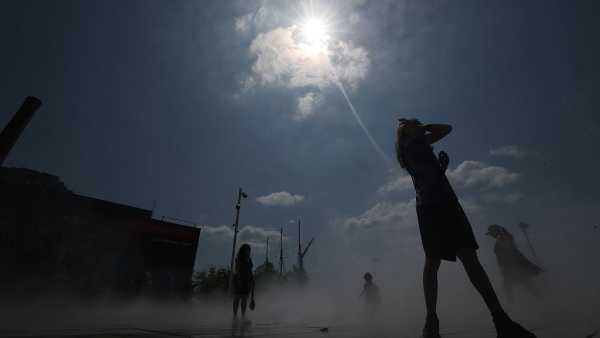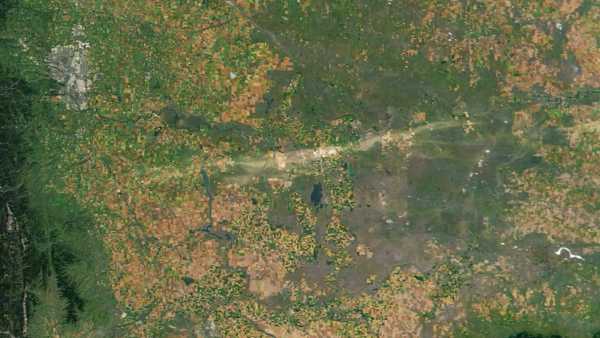
The faint streak in this satellite image is the scar left by a massive hailstorm that dumped giant balls of ice onto the ground. (Image credit: NASA/AQUA/MODIS) AT A GLANCE
Where is it? Brooks, southern Alberta, Canada [50.586757475, -112.12895463]
What's in the photo? A 125-mile-long “scar” left by a devastating hailstorm.
Which satellite took the photo? NASA's Aqua satellite.
When was this done? August 24, 2025.
This dramatic satellite image captures the aftermath of a massive hailstorm in Alberta, Canada, which left a massive scar across the landscape, roughly half the length of the Grand Canyon. The extreme event, which rained down golf-ball-sized chunks of ice, killed at least two animals.
Although the storm produced little lightning, it produced large hail and strong winds, causing significant damage to homes, vehicles, and infrastructure. Some hailstones reached a maximum diameter of 5 centimeters, and wind speeds exceeded 120 km/h (75 mph), equivalent to a Category 1 hurricane, according to The Weather Network.
You may like
-
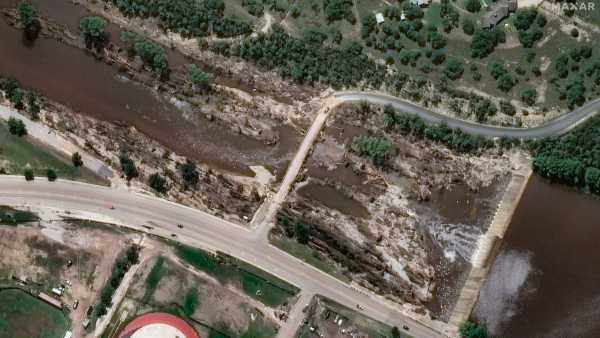
Texas flood devastation shown in before and after satellite images
-
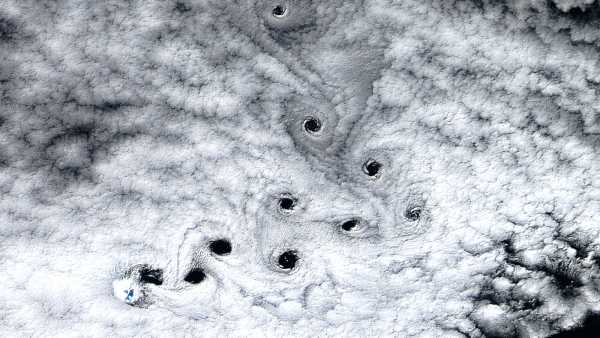
10 Strange 'Dark Voids' Appear in the Skies Over an Uninhabited Island Near Antarctica
-
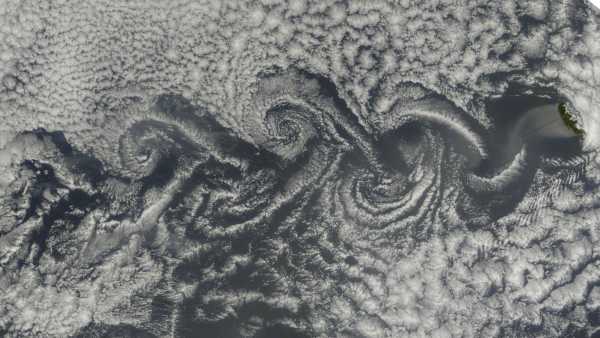
Stunning cloud formations swirl around six different Atlantic islands.
In addition to damaging property, the giant falling ice balls crashed into the ground and tore out vegetation. This left a scar on the landscape approximately 200 kilometers long and 15 kilometers wide, clearly visible from space.

This storm produced golf ball-sized hailstones. This photo shows similar ice floes that fell in Canberra, Australia, in 2020.
The hardest-hit area was around Brooks, a small town located approximately 160 kilometers southeast of Calgary (visible in the upper left corner of the satellite image). A combination of large hail and strong winds damaged local homes and cars and knocked down nearby power lines, some of which were bent nearly 90 degrees, according to Canadian news channel CBC.
“The entire front of the house is destroyed,” Brooks resident Colleen Foisy told CBC. “The fence was practically ripped off its cement posts. Flowers in the garden were scattered, branches were broken off the trees. My truck, which is only a year old, was riddled with hail. The awning on my boat was torn to shreds.”
Strong winds also blew over a large fence at White Barn Fun Farm, west of Brooks, killing a Bactrian camel (Camelus bactrianus) and a pony that were “best friends,” the farm owner told CBC. A horse and several birds were also injured.
Powerful storm downs power lines, damages homes and cars in southern Alberta — YouTube
Watch “Hailstorm Alley”
While this event was extreme, storms like this are not uncommon in this part of Alberta, often referred to as “hail alley.”
“The region's climate and geography favor storm development, and dozens of hailstones typically fall here each year,” Earth Observatory officials wrote.
You may like
-

Texas flood devastation shown in before and after satellite images
-
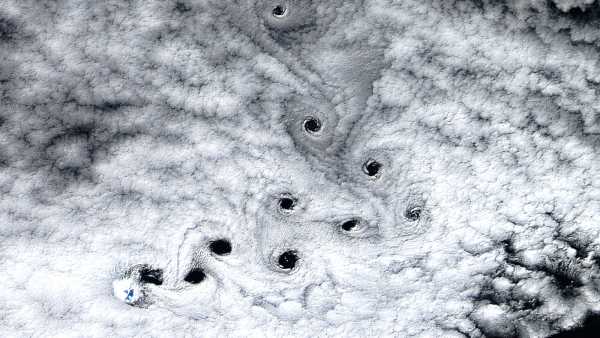
10 Strange 'Dark Voids' Appear in the Skies Over an Uninhabited Island Near Antarctica
-
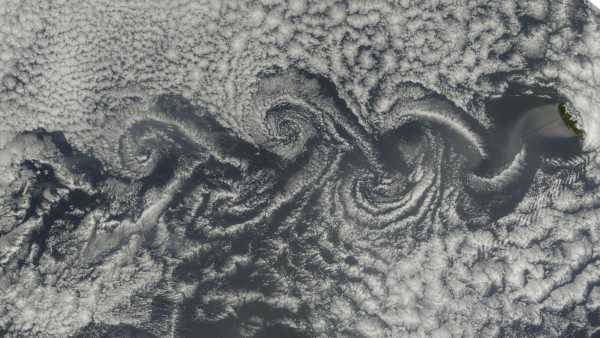
Stunning cloud formations swirl around six different Atlantic islands.
Hail damage in Alberta has totaled more than C$6 billion (US$4.3 billion) over the past five years, not including damage from the August storm, which has yet to be calculated, according to a recent report in Insurance Business magazine.
MORE EARTH FROM SPACE
A rare phenomenon turns an African thunderstorm into a giant ethereal 'jellyfish'.
— Watch Valencia disappear under a sea of mud during Spain's deadly floods.
— Consecutive lightning strikes illuminate the eye of a tropical cyclone in rare photographs
Some of those affected by the latest storm are still recovering from a similar event in July.
Researchers at NASA's Langley Research Center are now working on a way to better predict these destructive storms in advance to help mitigate their impacts.
“Thanks to advanced identification techniques, we can quantify the distribution and frequency of severe storms with the exceptional accuracy that only satellite measurements can provide,” said Benjamin Scarino, a researcher at the Earth Observatory. “Long-term satellite data allows us to provide the reinsurance industry, project partners, and the research community with valuable information on severe storm activity and risk.”
TOPICS Earth from Space

Harry Baker, Social Link Navigation, Senior Staff Writer
Harry is a senior writer for Live Science based in the UK. Before becoming a journalist, he studied marine biology at the University of Exeter. He covers a wide range of topics, including space exploration, planetary science, space weather, climate change, animal behavior, and paleontology. His recent work on solar maximum won the 2024 Aerospace Media Awards in the Best Space Story category and was shortlisted for the 2023 NCTJ Awards for Excellence in the Breaking News category. He also writes Live Science's weekly series, “Earth from Space.”
You must verify your public display name before commenting.
Please log out and log back in. You will then be asked to enter a display name.
Exit Read more
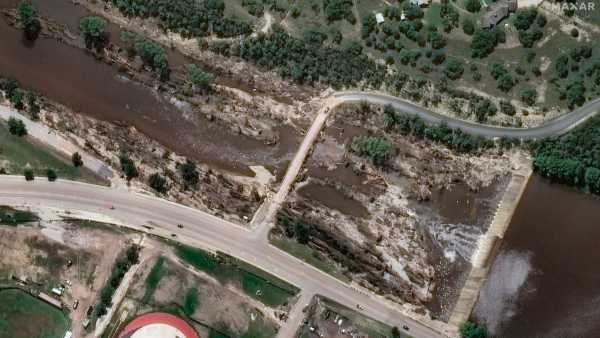
Texas flood devastation shown in before and after satellite images

10 Strange 'Dark Voids' Appear in the Skies Over an Uninhabited Island Near Antarctica
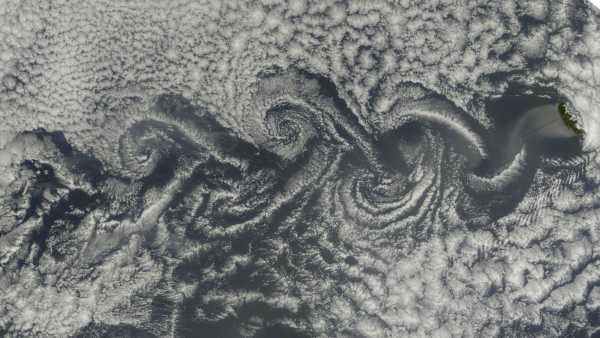
Stunning cloud formations swirl around six different Atlantic islands.
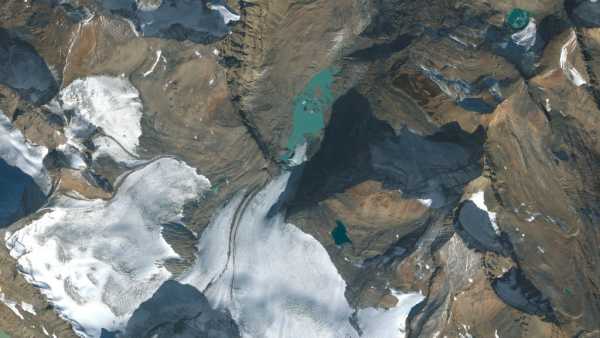
Glaciers in North America and Europe have lost “unprecedented” amounts of ice over the past four years.
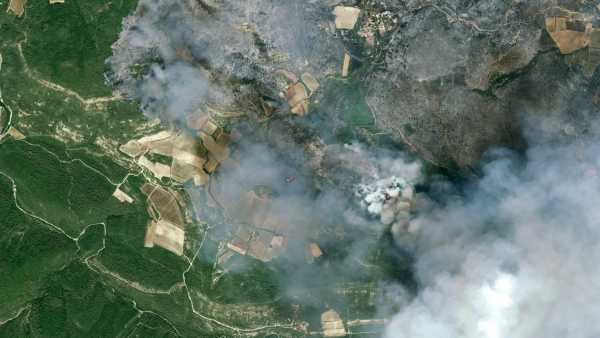
Satellites show France's biggest wildfire in 75 years engulfing an area larger than Paris.
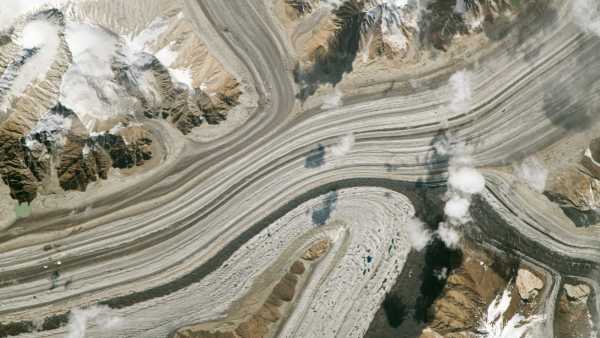
A trio of striped glaciers merging on the “highest battlefield on Earth” are part of a larger anomaly that scientists don't fully understand.
Latest weather news
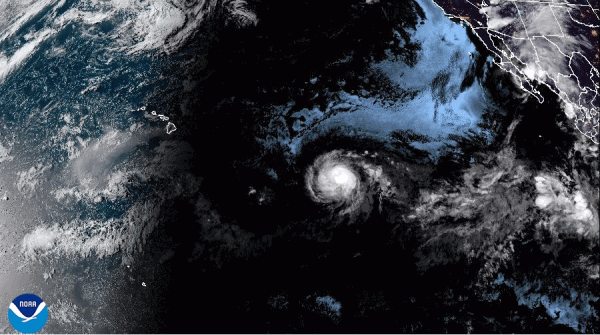
Category 4 Hurricane Kiko is heading toward Hawaii, but forecasters say it will weaken before it gets there.
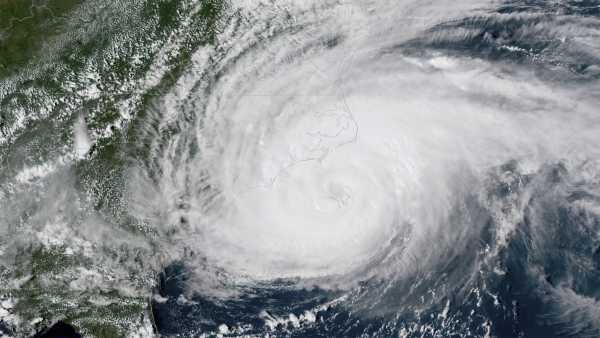
'Now is the time': Category 6 storms may be introduced under the new storm intensity scale.
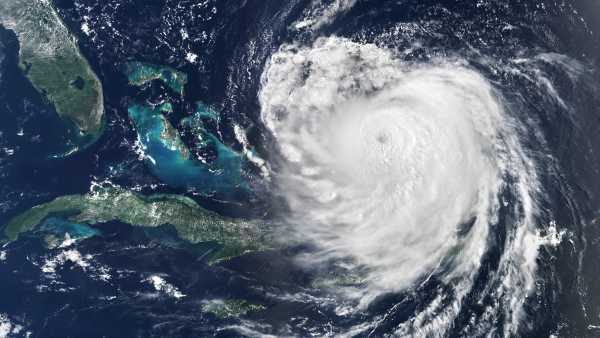
Forecasters Predict La Niña Conditions This Fall: What to Expect
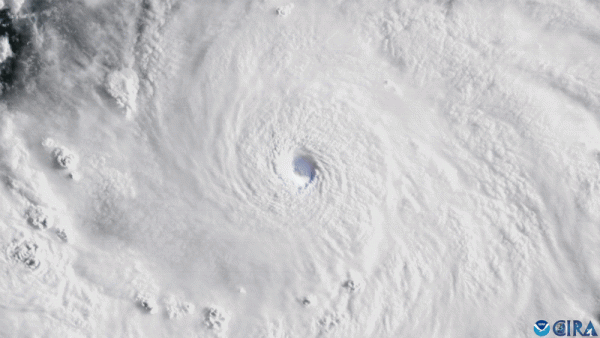
Watch as Hurricane Erin reaches Category 5 strength with lightning.
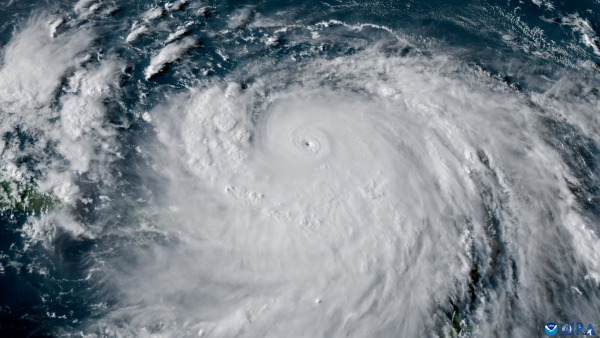
Forecasters warn that Hurricane Erin could bring 100-foot waves to the East Coast this week.
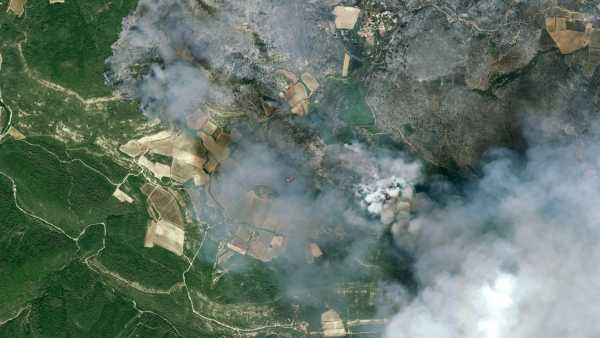
Satellites show France's biggest wildfire in 75 years engulfing an area larger than Paris.
Latest features
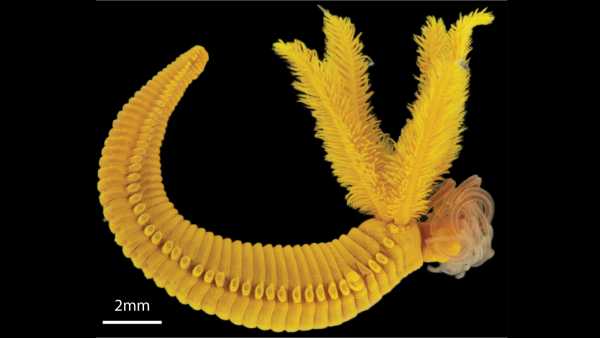
Paralvinella hessleri: A yellow worm that lives in acid and fights poison with venom.
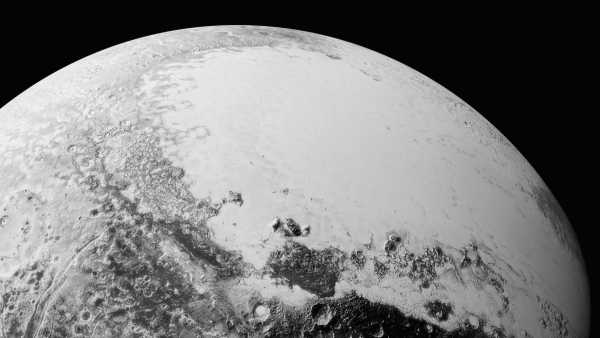
Why does Pluto have such a strange orbit?
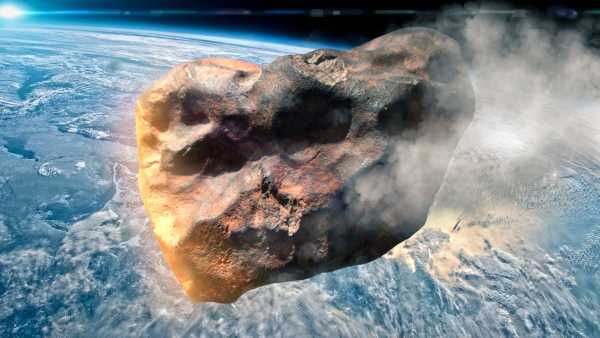
What happened to the asteroid that killed the dinosaurs?
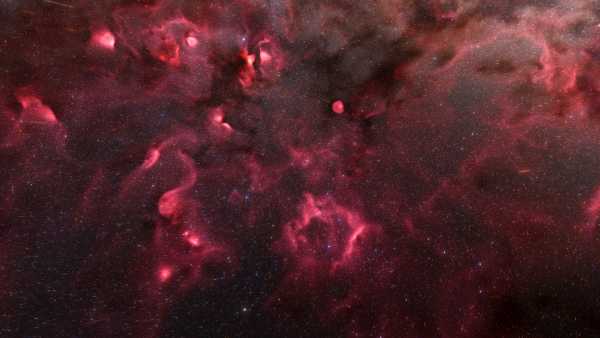
Fly among 44 million stars in the latest 3D map of our galaxy from the Gaia telescope – Space Photo of the Week

What are “magic numbers” in nuclear physics?

“It's like trying to see fog in the dark”: How strange pulses of energy are helping scientists map the universe.
LATEST ARTICLES

A quantum internet is getting closer thanks to a new chip that helps transmit quantum signals over real fiber optic cables.
Live Science magazine is part of Future US Inc., an international media group and leading digital publisher. Visit our corporate website.
- About Us
- Contact Future experts
- Terms and Conditions
- Privacy Policy
- Cookie Policy
- Accessibility Statement
- Advertise with us
- Web notifications
- Career
- Editorial standards
- How to present history to us
© Future US, Inc. Full 7th Floor, 130 West 42nd Street, New York, NY 10036.
var dfp_config = { “site_platform”: “vanilla”, “keywords”: “type-regular,serversidehawk,videoarticle,van-enable-adviser-
Sourse: www.livescience.com


